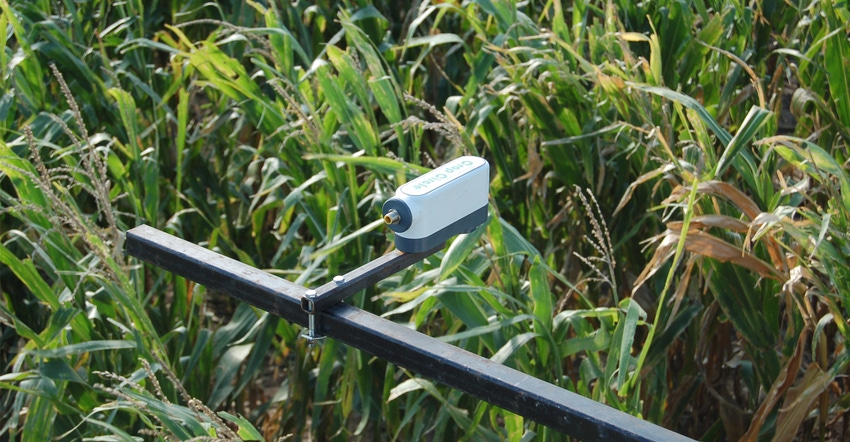May 7, 2020

For much of Nebraska, spring precipitation has been slightly below normal, providing some of the best field conditions for preplant fertilizer nitrogen applications in recent years. Great weather is appreciated, but there still are considerations that justify shifting more nitrogen applications to in-season versus preplant.
One concern is N loss when fertilizer N was not incorporated. Fertilizers containing urea (such as dry urea and liquid UAN) need to be either injected, incorporated into the soil, or have a half-inch of precipitation or irrigation to move them into the soil to stop ammonia volatilization.
You may wonder how much ammonia volatilization loss can occur with surface-applied fertilizer N. Unfortunately, N loss through ammonia volatilization is difficult to predict or easily quantify, but it is greater with high soil pH, low cation exchange capacity, more surface crop residues, wet soil, insufficient rainfall, high temperatures and higher N rates.
In addition to volatilization, N loss also may occur because of leaching of nitrate with heavy precipitation and denitrification with soil waterlogging, which may have localized occurrence this spring.

Another disadvantage of applying all N preplant is that we can’t adjust for differences in actual nitrogen availability. For instance, actual N availability may be less than expected if the release of manure N is lower than expected, or if uptake of N by a cover crop and N immobilization by cover crop residue is more than expected.
To account for this variability and reduce N losses, consider applying more of your fertilizer N in season. The amount of fertilizer N to be applied in-season can be estimated with the Late Spring Soil Nitrate Test or by use of crop canopy reflectance sensing.
Late spring soil nitrate test
The LSNT has been available for more than 30 years and is used for corn production to assess the need for in-season N application. The LSNT has been well-validated for medium and fine texture soils, but it is not expected to work well for sandy soil.
It has been less studied and used in Nebraska than in Iowa, and we advise use of the Iowa State University guidelines. See the ISU publication "Use of the Late-Spring Soil Nitrate Test in Iowa Corn Production" for more discussion of LSNT considerations, such as for fields with manure application.
Sensor-guided in-season N application
Remote sensing of the crop canopy reflectance is the best option to quantify the need for in-season N if the plants are large enough. The remote sensing can be:
with a hand-held sensor such as with the made-in-Lincoln Rapid Scan
with aerial sensing (drones, planes, satellite)
with sensors fitted on high-clearance N application equipment
Such remote sensing requires good canopy development, such as the eighth leaf stage (V8, or with 10 horizontal or droopy leaves) or later. Remote sensing is best done with a reflectance index such as NDVI (normalized difference vegetative index). However, with corn, the NDRE index (normalized difference red edge) is preferred. The crop N status for any given part of the field is determined by relating the NDRE for that part of the field with high NDRE readings from the field.
The high NDRE readings often are from established “high N reference” areas or strips in the field.
These areas can be small, such as 20 by 20 feet, with hand application of extra fertilizer N, for example at a rate of 1 pound of urea per 100 square feet. Data from sensor readings for other parts of the field are then compared to the high N reference with the ratio of the sensor reading from the field divided by the sensor reading from the high N reference equal to a “sufficiency index.”
The sufficiency index equals target area NDRE divided by reference NDRE.
Mathematical algorithms (Solari algorithm, Holland-Schepers algorithm) developed for corn in Nebraska are then used to convert the SI value to an N rate.
Given the slightly below-normal spring precipitation this year, most areas in Nebraska are likely to not have had significant N losses to already applied N. However, losses could be possible if soil conditions were not favorable at the time of N application, or if heavy precipitation events occur in the next few weeks.
If possible, use of in-season N can be practiced if significant N loss is expected or split N application is being practiced. The in-season fertilizer N rate can be determined using LSNT soil sample analysis for younger corn.
Remote sensing of canopy reflectance can be used once the crop canopy is full enough to determine N need.
Iqbal is a Nebraska Extension nutrient management and water quality specialist.
Charles Wortmann, Extension soil and nutrient management specialist; Bijesh Maharjan, Extension soil and nutrient management specialist; and Laila Puntel, soil fertility and precision ag specialist, contributed to this report.
You May Also Like




